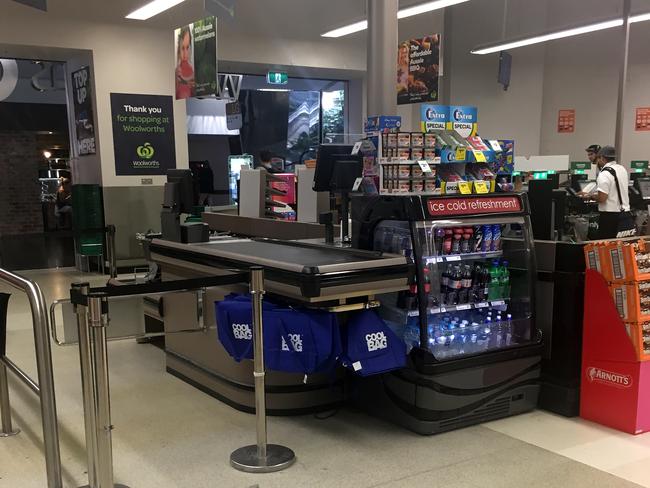‘The vast majority of our customers do the right thing’: Woolworths embraces self-service
WHILE Coles gets tough on self-service customers with item limits and shoplifting stings, Woolies is quietly doing something different.
EXCLUSIVE
WOOLWORTHS is replacing nearly all of its traditional check-outs with self-service at some inner-city stores as part of its multimillion-dollar renewal program to win back customers.
The retailer is making a pointed move to embrace self-service as rival Coles goes in the other direction, bringing back more belted check-outs and trialling item limits on self-service.
The move comes as industry sources estimate Coles’ annual grocery theft bill at about $1.1 billion, a figure the retailer disputes.
Coles would not reveal how much it loses to theft, and denies that it is the reason for the new rules.
“Coles is trialling a 12-item limit on self-scanning checkouts in a small number of stores as part of our ongoing commitment to improve customer service,” a spokesman said.
“We have found customers with small baskets can generally complete their shopping faster by using self-scanning checkouts, where there is always a team member on hand to assist.
“We also have team members available to serve on traditional belted lanes for customers who prefer to use them or have a larger number of items.”
Woolworths also refused to reveal how much it loses to self-service theft each year, saying only that the “vast majority of our customers do the right thing when purchasing items at our self-serve check-outs”. “We have security measures in place for those that don’t,” a spokesman said.
A recent survey by consumer research company Canstar found one in six customers aged in their 30s said they had deliberately not paid for an item at a self-service checkout. Almost one in 10 shoppers of all ages admitted they had cheated in the self-serve section, with men more likely to steal than women.
That doesn’t seem to bother Woolworths, which, as part of its planned overhaul of more than 80 stores this year, is vastly increasing the number of self-service check-outs at its metro and smaller-format locations.
One store, the Woolworths at the Central Park shopping centre in inner-Sydney’s Chippendale, recently completed a new front-of-store fitout, removing all but one of its traditional check-outs and more than doubling the size of the self-service area.



“Metro and smaller-format stores will always have a greater percentage of self-serve options due to the nature of customers wanting to get in and out of the store quickly,” the spokesman said.
“Woolworths wants our customers to have a choice about how they pay for their groceries. We know that self-serve check-outs are very popular with our customers nationwide and we have them in around 80 per cent of our stores, with an average of six in each.”
Last year, Woolworths boss Brad Banducci said a key priority would be replacing ageing self-service machines, which are noticeably slower to use than those at Coles. “All our stores have enormous technology improvement opportunities,” he said. “We were the first into [self-service check-outs], and they’re slow.”
Woolworths confirmed that new, cashless self-service check-outs had now been introduced into more than 100 stores, with around a 50-50 split between the new models and the standard self-service format.
“As we continue to renew our network of stores across the country, we are also introducing cashless self-serve check-outs,” the spokesman said. “This is a response to more and more customers who are now using card transactions when purchasing their groceries.”
But the spokesman said traditional check-outs would “always have a place in our stores as many customers enjoy using them”. “We will always listen to our customers’ check out needs,” he said.
“There will be some locations where more traditional check-outs are required or other stores where our customers enjoy using our standard self-serve check-out. We will always seek to provide the facilities our customers demand.”
Woolworths is widely expected to overtake Coles in sales growth for the first time in more than seven years when both retailers release their second-quarter results later this month.
In October, Woolworths reported a rise in first-quarter comparable food sales — which excludes store openings and closures — of 0.7 per cent, ahead of analysts’ expectations of a 0.4 per cent rise. It was the first positive reading in nearly two years.
Coles’ comparable sales rose 1.7 per cent in the same period — its slowest growth since 2009 — and analysts predict that number could fall as low as 0.5 per cent in the next quarter, with Woolworths tipped to report sales growth of around 1.5 per cent.




